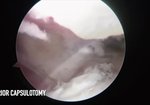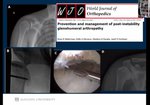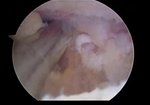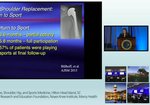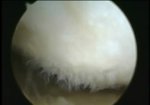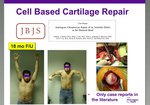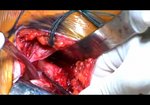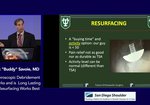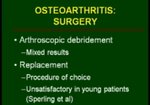
Video Player is loading.
Current Time 0:00
/
Duration 0:00
Loaded: 0%
0:00
Stream Type LIVE
1x
- 0.5x
- 0.75x
- 1x, selected
- 1.25x
- 1.5x
- 1.75x
- 2x
- Chapters
- descriptions off, selected
- captions settings, opens captions settings dialog
- captions off, selected
This is a modal window.
Beginning of dialog window. Escape will cancel and close the window.
End of dialog window.
10 seconds
Playback speed
This is a modal window. This modal can be closed by pressing the Escape key or activating the close button.
7,999 views
April 15, 2011
Shoulder arthroplasty for glenohumeral arthrosis has been shown to provide reliable pain relief in older, ...
read more ↘ less active populations. Younger patients, however, who desire to continue participation in high-demand activities, may not be optimal candidates for glenohumeral arthroplasty. Arthroscopic debridement has been reported to provide incomplete symptomatic relief in this cohort of patients and is less successful in patients with large humeral osteophytes.
To this end, it is evident from cadaveric studies that the axillary nerve runs in close proximity to the inferior glenohumeral capsule and compression may potentially contribute to posterior shoulder pain in a manor similar to quadrilateral space syndrome. Therefore we present a technique that combines traditional glenohumeral debridement and capsular release with inferior humeral osteoplasty and arthroscopic transcapsular axillary nerve decompression as a joint preservation procedure.
↖ read less
read more ↘ less active populations. Younger patients, however, who desire to continue participation in high-demand activities, may not be optimal candidates for glenohumeral arthroplasty. Arthroscopic debridement has been reported to provide incomplete symptomatic relief in this cohort of patients and is less successful in patients with large humeral osteophytes.
To this end, it is evident from cadaveric studies that the axillary nerve runs in close proximity to the inferior glenohumeral capsule and compression may potentially contribute to posterior shoulder pain in a manor similar to quadrilateral space syndrome. Therefore we present a technique that combines traditional glenohumeral debridement and capsular release with inferior humeral osteoplasty and arthroscopic transcapsular axillary nerve decompression as a joint preservation procedure.
↖ read less
Comments 15
Login to view comments.
Click here to Login


